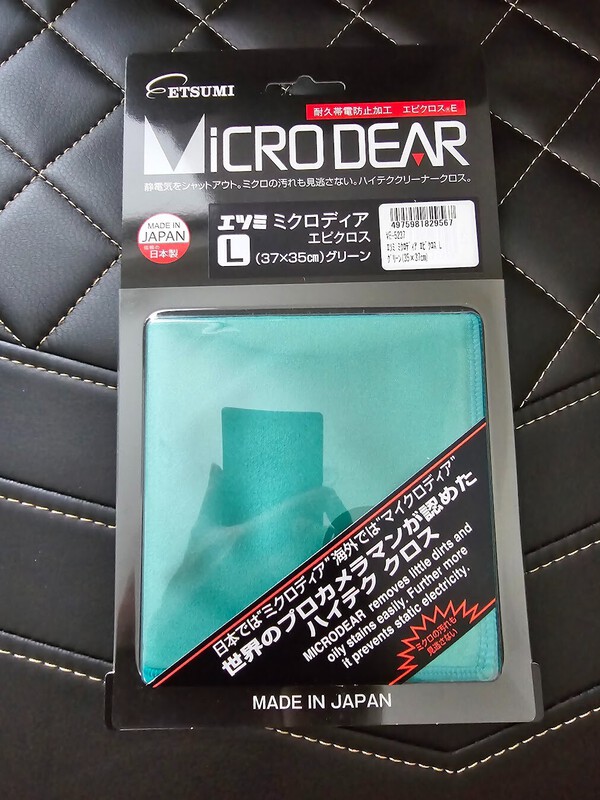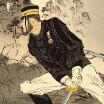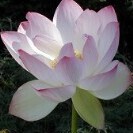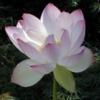Search the Community
Showing results for 'microdear'.
-
Is Microdear still a around, I am having a hek of a time finding them from the usual places? Feel free to pm me if you choose.
-
Dear learned friends. I recently bought what I thought was the usual orange coloured Microdear cloth from an online store (the picture on their site clearly showed the usual orange one) but what arrived was this green one... Does anyone have any experience with using this green Microdear cloth variant? Does anyone know whether it is safe to use or should I send it back? Many thanks, Costas
-
Microdear cloths are often mentioned as the best, but most any microfiber cloth (a lense-cleaning cloth) will do. This is worth reading.
-

Best way to deal with rust spots
French nihonto replied to Emil's topic in General Nihonto Related Discussion
I think there are many techniques, many of them very good. I had an experience with a rust stain on one of my blades that had been in customs too long. The stain was much bigger than yours. I inhibited one of my microdear with clove oil and rubbed it gently for just over an hour. Using my fingertip to be as precise as possible, after just over an hour and quite a bit of pain in the arm and hand (I understand the physical difficulty for a polisher who does this sort of thing all day), the rust stain turned into a clove oil stain, and I rubbed gently for at least an hour. The rust stain turned into a small light white stain and the steel was healthy again. And the polish around the stain remained perfect. Very archaic but it worked for me -
Hello, based on several advises I tried to buy this "Microdear Mikrofiber Deluxe". But unfortunately here in Europe, Amazon is not offering it and shipping from Amazon US is quite expensive (84 USD ). I of course tried to find it on the store from Amazon in Japan - but also did not find it. I would be very happy if somebody could sell me such fabrics or advise me where I can find it. Many thanks in Advance Klaus
-
ebay search ETSUMI cleaning cloth. It's Microdear. In the same Microdear package and everything. I just got a couple in shipped from a Japanese dealer. only around $30-40.
-
From what I can understand, this company is now making the same cloth with the special microdear material. You can see the little Microdear brand label. Use this search term to find it: Etsumi Microdia Epicurus エツミエピクロス https://page.auction.../auction/v1116729635
-
Microdear cloth, %99 isopropyl alchohol, quality oil. Microdear is a little pricy but it is the best thing I have found for swords. Even tissues can absorb or let through oils on your skin, or have small pieces left behind which may cause an issue; why I stopped using them. Also of microfiber make sure it is quality and thick, none of the cheap ones. P.S. welcome to the board!
-
Sorry, Microdear is a cleaning cloth designed for optics.
-
Actually, it is not. From personal experience, I had an Echizen Rai Kuniyasu that was polished in Japan. Over the first 6 months I followed the polisher's care instructions precisely. Which included using uchiko. Over those 6 months the detail and activity continued becoming more and more vivid. In fact, this sword was shown twice to our study group over that time. Upon which our late friend Arnold Frenzel commented aloud "where did all that ashi come from." Where indeed! Now, having said that, I was given very similar care instructions using uchiko for a sword I had polished after that. I've chosen not to follow the uchiko path on this other sword. Why? Polisher's uchiko will not scratch when used absolutely correctly. However, it will absolutely leave fine scratches if it is not used absolutely correctly. Since I do not trust myself to be using uchiko absolutely correctly over 100% of the sword, I choose not to use it. Additionally, I've watched two different polishers uchiko my swords and neither one left a scratch on either sword. In any case, old, new, times are a changing. Microdear cloth and anhydrous alcohol works just fine. Regards
-
Have four Microdear cloths. They will be used twice (refolded) for viewing and inspecting, but only once each for cleaning-removing oil purposes before being washed and dried separately (from other laundry) with Arm and Hammer free of perfumes and dyes laundry detergent and no dryer sheets. Have had no issues. https://www.militaria.co.za/nmb/topic/24981-nihonto-care-with-microdear-cloth/ Whether using Microdear cloths, or unscented kleenex, it's not a good idea to wipe a second time or back and forth with the same material.
-
Hello everyone, to clean swords, I have bought a Microdear Microfiber Deluxe Cleaning Cloth (just google it to figure what it is, if you don't know). I am just asking: how to wash it ? I fear that tap water and/or soap used for cleaning the cloth might damage the blade later. I also wonder if I should wash the cloth before first use. Thanks for your answers Xavier. PS: great forum BTW. I seldom post but I come here often and I am learning a lot. It is a blessing to have so many knowledgeable and helpful people here
-
Several pink ones, large green one, a large tan one. I only own 2 swords, 2 tanto, and an O-kogatana, but was familiar with Microdear from 1990s onward, while wife had me help her haul her large ass lense Nikons all over South American. Uchiko might damage your swords, but several hundred uses of Microdear has never damaged lens or sword. Last weekend I spent a lovely day viewing several dozen Juyo level swords with a collector who preferred use n dispose kleenex tissues rather than Microdear. I was more concerned about using the Kleenex than the Microdear I had brought. If you've got orange ones, send them my way. The wife likes Hermes colored stuff.
-
Anyone got experience on getting the oil out of these? The packaging is in Japanese so any cleaning instructions goes woosh over my head, as mentioned in this thread they're harder to come by so I'd like to treat the couple large blue microdear cloth ones I have with care.
-
Microdia is just a funky machine translation of the Japanese phonetic spelling of Microdear (ミクロディア). Nothing has changed. Etsumi still makes them.
-
If acid sodium bicarbonate applied with a q-tip, use extremely small amount sword oil, to make it a slight paste apply to the spot. Let sit so it can neutralize any acid. The sword oil should not be an issue to the Ph. Remove the paste by using oil/alchohol(as noted below) and a spray bottle with something to catch any run or rust that gets loose. Verify it is clean, if any loose particles are on the blade it will cause scratches. Oil the blade as normal once you are sure it is clean. Avoid the spot in normal wiping. Use microfiber and very gently apply oil to that spot. Check back in week or two and see if the rust has changed color, or expanded. Please note this is not professional advise only an opionion how I would go about it... use your best judgment in what to do. May also want to check the Saya for darkspots or if you feel anything rub when re sheathing. A few pics would also help. Also for cleaning %99 isopropyl alchohol, microfiber, or a lense cloth like microdear. P.S. per each iteration let the rust dry, do not want a damp area that will eventually cover the spot with oil over top. Will stop oxidation but any remains residue may continue to rust. The %99 isopropyl will help greatly, but better to be safe.
-
Don’t ever use anything on a blade in Polish, all you should ever do is oil it. There are lots of threads on cleaning and maintaining blades. But the general consensus is 1) remove old oil using the highest quality micro fibre cloth you can find, this should be a high end lens cleaning cloth NO a cheapo general cleaning cloth..in the US people suggest Microdear..but for Europeans like us the best option seems to be Zeiss. If you use the cloth and wipe the sword with isopropyl (IPA) 99%….do not use UCHIKO powder as unless you’re trained to use it as you can scratch the blade. 2) then using a lint free cotton apply your new thin coat of oil, you should not see any beading…it should really be invisible.
-
People use tissues, without any issue. I'm pretty sure ANY Microdear cloth intended for thousands of $ lenses will be just fine for a sword. Relax and use it. It's better than what 99% of us are using. Wish I could find Microdear here.
-
First and most important thing: do not attempt ANY restoration work yourself. Second thing to do: clean it with guidance provided here! Per the care guide on the forum here: ( I just cut and pasted it for you) The starting point to preserving a blade is to pick up some light machine oil, the type sold for sewing machines, or some traditional oil for Japanese blades which is called choji oil. This refers to clove oil, but is actually a light machine oil mixed with a tiny bit of clove oil just for the pleasant traditional scent. Do not use pure pharmaceutical clove oil. Many other oils such as gun oils and vegetable oil can gum up, leave stains or have other adverse effects over time. A few drops on a clean and soft cloth, lightly wiped over the blade when it has been handled should do the trick. In climates that are less humid, cleaning does not have to be done very frequently. Less is more when it comes to Nihonto. Uchiko powder and commercial sword cleaning balls containing powdered abrasive should generally be reserved for blades heavily out of polish, and even then very sparingly. They can be used occasionally on Nihonto to remove old oil, but bear in mind that they are abrasive and will dull a new polish over time. Removal of old oil can easily be done with pure alcohol, otherwise known as dehydrated alcohol or waterless ethanol. This is 99.5% pure alcohol. Be careful when cleaning the area close to the tang - try to avoid moving the tissue up from the nakago - the tissue might pick up rust particles from the nakago (tang) and scratch the blade. Move the tissue in one direction - from the tang to the tip. Never ever move your hand up and down - you could cut yourself badly some day (and blood will stain a blade.) Scented or otherwise hampered tissue paper is be avoided. Normal tissue is fine and a lot easier to get a hold of. The best cloth to use is micro fiber cloth, sold for photographic lenses. Microdear is known as the best of these brands and can be found online. These can be washed in water when they get too dirty. For newly polished blades or newly made blades, the following is the traditional routine:- For the first 3 months, the blade has to be cleaned every week because it can rust easily. After that it is cleaned once a month for 3-6 months and then only every 6 months. It has to be cleaned every time you use it or show it to someone. It has to be cleaned every month for 3-6 months if you move it out of its usual resting place (you move to a new house where the humidity level is different). Also, do not do anything to the tang, leave the black rust on the tang as it is. Also, leave any removal of deeper rust to a professional. If you need to remove any lose rust or gunk on the blade itself before oiling it, use as high a purity of isopropyl alcohol that you can find (electronics grade is usually good for that). Avoid abrasive materials. I would wait for those who can translate to give you an opinion on the quality of the blade, but if the koshirae ensemble is any indication, it appears to be of good quality.
-
The starting point to preserving a blade is to pick up some light machine oil, the type sold for sewing machines, or some traditional oil for Japanese blades which is called choji oil. This refers to clove oil, but is actually a light machine oil mixed with a tiny bit of clove oil just for the pleasant traditional scent. Do not use pure pharmaceutical clove oil. Many other oils such as gun oils and vegetable oil can gum up, leave stains or have other adverse effects over time. A few drops on a clean and soft cloth, lightly wiped over the blade when it has been handled should do the trick. In climates that are less humid, cleaning does not have to be done very frequently. Less is more when it comes to Nihonto. Uchiko powder and commercial sword cleaning balls containing powdered abrasive should generally be reserved for blades heavily out of polish, and even then very sparingly. They can be used occasionally on Nihonto to remove old oil, but bear in mind that they are abrasive and will dull a new polish over time. Removal of old oil can easily be done with pure alcohol, otherwise known as dehydrated alcohol or waterless ethanol. This is 99.5% pure alcohol. Be careful when cleaning the area close to the tang - try to avoid moving the tissue up from the nakago - the tissue might pick up rust particles from the nakago (tang) and scratch the blade. Move the tissue in one direction - from the tang to the tip. Never ever move your hand up and down - you could cut yourself badly some day (and blood will stain a blade.) Scented or otherwise hampered tissue paper is be avoided. Normal tissue is fine and a lot easier to get a hold of. The best cloth to use is micro fiber cloth, sold for photographic lenses. Microdear is known as the best of these brands and can be found online. These can be washed in water when they get too dirty. For newly polished blades or newly made blades, the following is the traditional routine:- For the first 3 months, the blade has to be cleaned every week because it can rust easily. After that it is cleaned once a month for 3-6 months and then only every 6 months. It has to be cleaned every time you use it or show it to someone. It has to be cleaned every month for 3-6 months if you move it out of its usual resting place (you move to a new house where the humidity level is different).
-
Hi, I’ve seen a number of threads on oiling but I am still unclear on several points. I live in quite a humid area, mean annual humidity of 83.9% and frequently reaches 100% (during long rains). This may mean different requirements and methods of taking care of nihonto than those mentioned in other posts. My questions are: - Oil needs to removed every once in awhile but how do I remove oil from the nakago? I assume a cloth would rip bits of the nakago or vice versa, and alcohol would trap moisture in its porous structure. - If a blade doesn’t have shirasaya, should I leave it unmounted or in koshirae? - Should tsuba be oiled? - What’s the best method to remove oil? 99.9% Isopropyl alcohol with tissue, microdear or a combination of both?
-
Does anyone know of a Microdear supplier in the UK? (I would use Alex's cotton shirt idea, but I'm a cheap-skate so all mine are poly-cotton! ) Jon
-
NMB's search feature is excellent https://www.militaria.co.za/nmb/search/?q=microdear&quick=1
-
1. A Microdear cloth with anhydrous 99% + Isopropyl alcohol is the way to go, especially on polished swords or swords in good condition. 2. A Microdear cloth can be washed, use a fragrance free baking soda based detergent. I use Arm and Hammer. 3. If using uchiko, wipe only once and in one direction. Uchiko can and will scratch if not used absolutely properly! And while many of these scratches are too fine to see under normal conditions, a very bright light and especially a quartz light will leave many sword owners regretting ever having used uchiko. 4. Care instructions should have been given with the sword.
-
Swords on Exhibit - Oiled(?)
EastCoast replied to EastCoast's topic in General Nihonto Related Discussion
All, This update has been a long time coming. I wanted to be able to give things time in order to provide an accurate and comprehensive review. 1. After years of display the only thing I have had to do is give the wax a quick swipe with the microdear to enhance the shine. There has been no clumping. There have been times when the wax has ever so slightly hazed, but those were only on blades in areas without dedicated climate controlled cases. 2. I recently removed and reapplied the wax. I do not think this was even necessary, but I was curious about how hard it would be to remove after sitting. The process I used was to wipe the blades with denatured alcohol. I then used a heat gun set to 140 to quickly pass over the blade followed by another wipe down. It removed 100% of the wax. 3. As to protection, I had tools rust in the same area I had some of the treated blades displayed. There was absolutely no corrosion on the treated blades at all. If I receive enough requests, I will make a video on the application and removal. Best, James
















